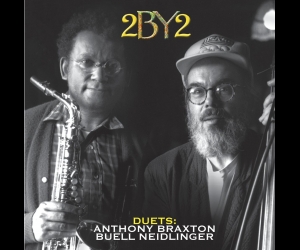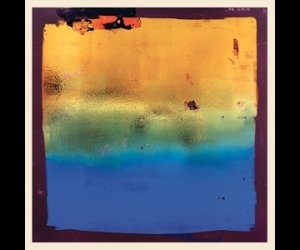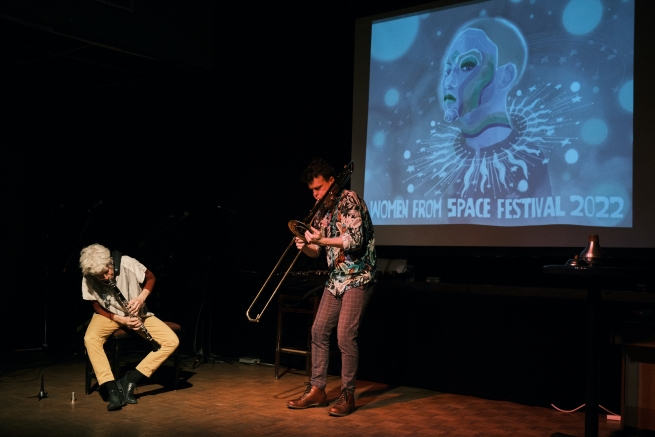
Women From Space usually takes place on International Women’s Day Weekend to celebrate the varied dimensions of contemporary music practiced by women. First launched in 2019 and organized by saxophonists Bea Labikova and Kayla Milmine, this rich, wide-ranging Toronto-based festival spans from contemporary composition to free improvisation and extends to other art forms including dance, video, and theatre. Pushed back this year due to pandemic-related concerns, the four-day event's first three concerts were presented at the TRANZAC Club and the final at the Music Gallery. The programs were not thematized; rather, each presented a series of performances that ranged from multimedia to singer-songwriters, and from solo to collective improvisations, both acoustic and electronic. If anything characterizes the work heard here, it’s a special fluency between styles, cultures, and technologies, or between the individual improvisers.
Synesthesians and Interactivists
Racha Moukalled is an emerging Toronto musician whose work carves out its own space from an embrace of different approaches and materials. The pieces performed here were inspired by the work of Swedish proto-abstractionist artist Hilma af Klint, whose paintings were often based on geometrical forms. Accompanied by videos of abstract patterns by Ilyse Krivel, Moukallad played piano and vibraphone in a series of alternately composed and improvised pieces with violinist Aline Homzy and English-horn player Elizabeth Brown. Even the unusual instrumentation was inspired: the particularly dry English horn, suspended in sound between the lower range of an oboe and the upper register of a bassoon, combined magically with the shimmering metallic highs of the vibraphone and the skittering pitches of the violin. While the composed pieces recalled the formalist lyricism of the Modern Jazz Quartet, an improvisation based on assigned colours touched on the vibrant abstraction of composers of the Second Viennese School.
Operatic soprano and dancer Neema Bickersteth appeared in a co-presentation with Understory, a project that creates collaborative works across space and time by combining live and video performances by diverse artists (see Musicworks 140: “Understory’s Sonic Ecosystem” by Jennifer Thiessen). This piece was one of continuous development, beginning in Alberta with flutist Jessica McMann’s hypnotic soundscape of low resonant tones on bass flute—a pattern further developed with complex electronic rhythms in Ottawa by computer-based audio visual artist Dot Starkey. Bickersteth then elaborated on the running video in a ritual-like fusion of stunning vocal expression and dance evocative of Africa, which she combined with an array of African fabrics, wrapping herself in them and creating patterns on the floor.
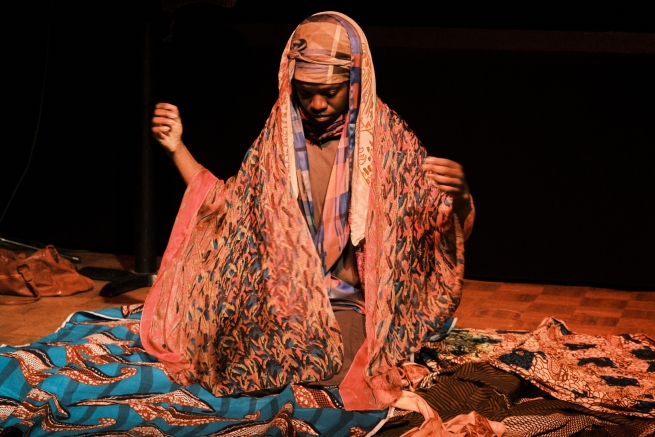
Susanna Hood, a Montreal-based voice and movement artist, developed her materials in a similarly multi-dimensional way. Hood has a longstanding interest in the music of composer and soprano saxophonist Steve Lacy, having been at one point a member of The Rent, a group devoted to performing Lacy’s work. Hood presented a version of Packet, Lacy’s song settings of poems by Judith Malina, best known as the founder of the Living Theatre. Hood preserved the original instrumentation of the works, setting her voice with pianist Tania Gill and soprano saxophonist Kayla Milmine. If anything, Hood’s presentation increased the focus on Malina’s poetry, emphasizing both the emotional intensity and social consciousness of the poems, while complementing the works with a translation into her own original medium, adding intense, unaccompanied dances between pieces to create another layer of expression.
Improvisers, Single and Multiple
While improvisation played a role in the previous works, it was everything in other performances. Trumpeter Nicole Rampersaud opened the festival with an expansive exploration of extended trumpet techniques and electronic interaction. Beginning with bird calls and muted forest cries, she employed both standard and soprano trumpet and extensive looping through multiple microphones to create a world of trumpets—lows, highs, and blips—expanding her clarion horn into its own soundworld.
Similarly, flutist Sara Constant fashioned her own improvised universe in her ongoing project called Surface Tensions. Using a standard concert flute, a bass flute, two organs, and microphones, she created a continuously evolving work in which brief, expanding flute loops combined with organ drones, which she created by placing weights on the keys. The piece concluded with Constant taping down keys on amplified flutes to control the pitches of feedback, producing an orchestra that was ultimately playing itself.
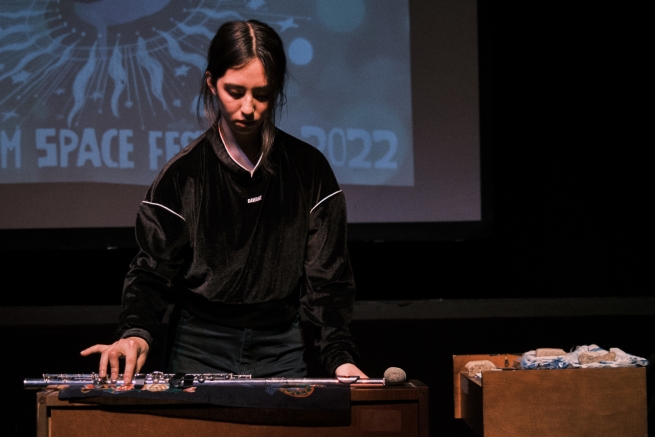
Operating within more traditional parameters, Marilyn Lerner sat at a grand piano and improvised a vast tapestry that blurred and extended the vocabularies of jazz and modernist expressionism into a sweeping panorama of visionary connections. Similarly, clarinetist Lori Freedman and trombonist Scott Thomson, who have been cultivating the art of duo improvisation for sixteen years, combined their stunning instrumental resources (both have very few equals for sheer variety of techniques on their chosen instrument) with their long-developed responsiveness to one another’s conversational musical gambits.
The opposite of this sustained partnership was presented by an assembly of improvising harpists. Presented with submissions from four harpists, the festival organizers decided to invite all of them to perform as an improvising quartet, though illness prevented Grace Scheele from joining Isabelle Clermont, Kathryn Merriam, and Elysha Vorstenbosch. The three created a continuous improvisation that combined a wealth of techniques, ranging from traditionally ethereal string sweeps and resonant plucked chords to gritty industrial noise, in a celebration of the harp’s myriad, largely unexplored possibilities.
Such contrasts were also at the heart of the music of PIQSIQ, the British Columbia duo of Tiffany Kuliktana Ayalik and Kayley Inuksuk Mackay. The sisters grew up in the traditions of Inuit throat singing, an art that extends the vocal range downward into a multiphonic bass range that is then combined with circular breathing. PIQSIQ stretches these techniques further, adding fluid upper register melodies and a looping machine to repeat and vary their materials, mining multiple traditions to create complex, deeply evocative works: hypnotic auditory environments that are as mysterious as they are compelling.
Having survived the COVID-19 lockdown so early in its history, Women From Space seems poised to become an enduring event.
Photos by Vennie Tu.
Top: Lori Freedman and Scott Thomson
Middle: Neema Bickersteth
Bottom: Sara Constant.
LINK: womenfromspace.com
